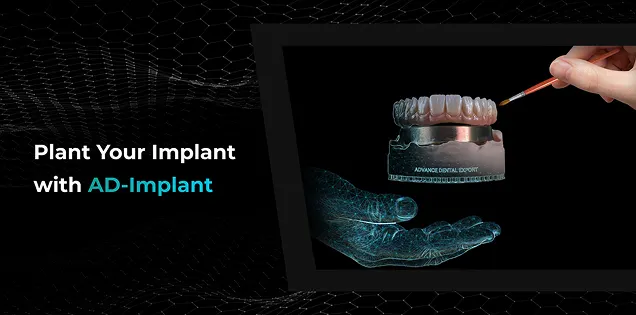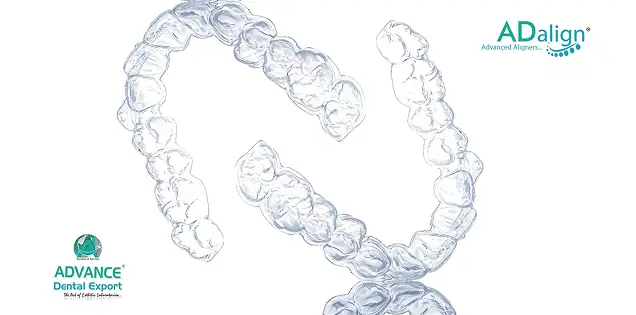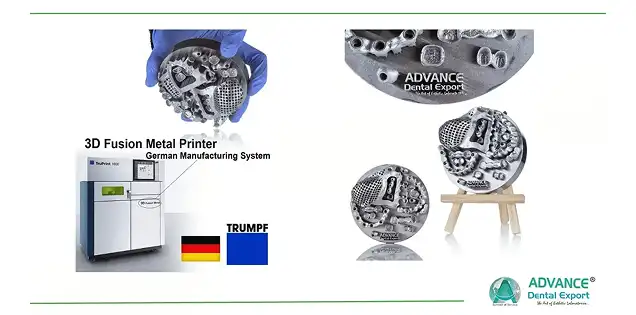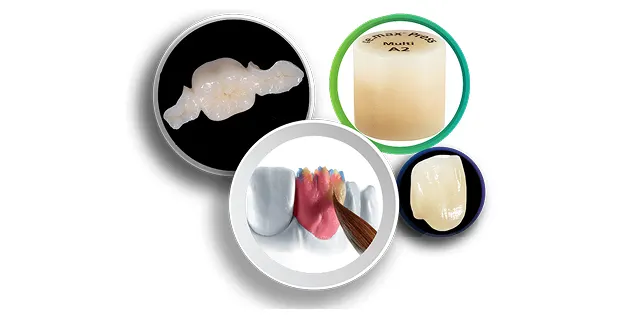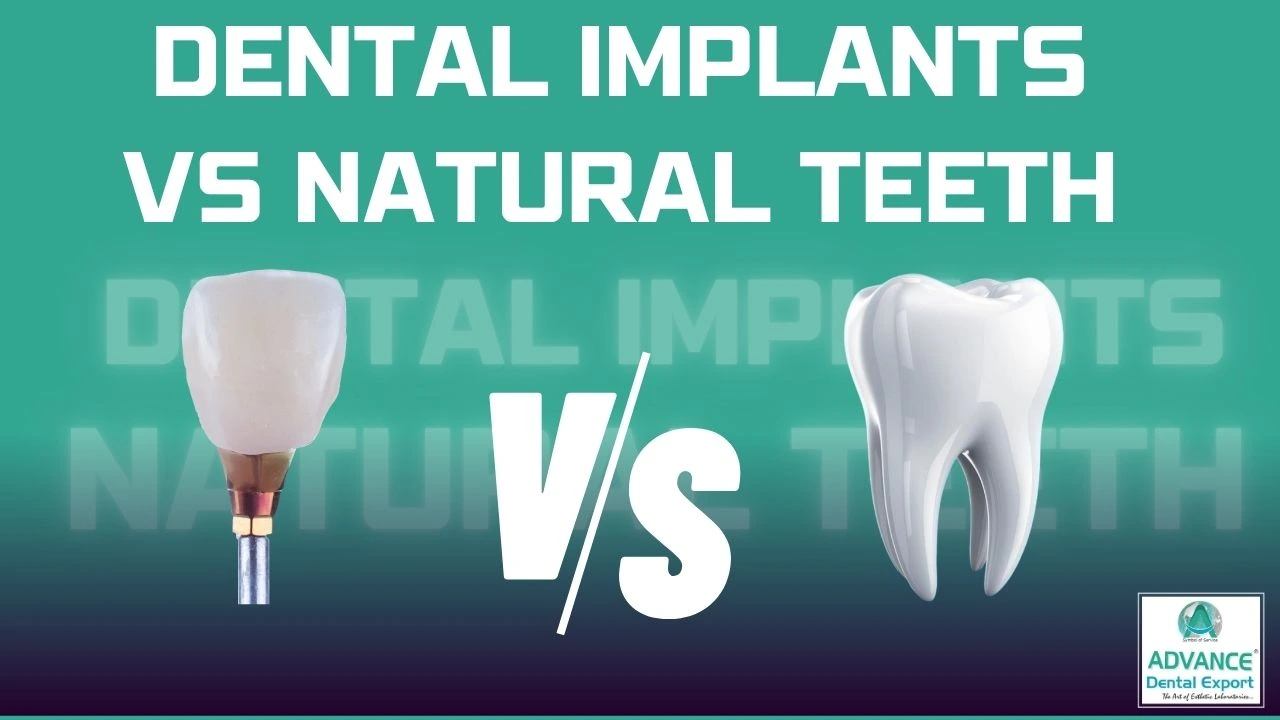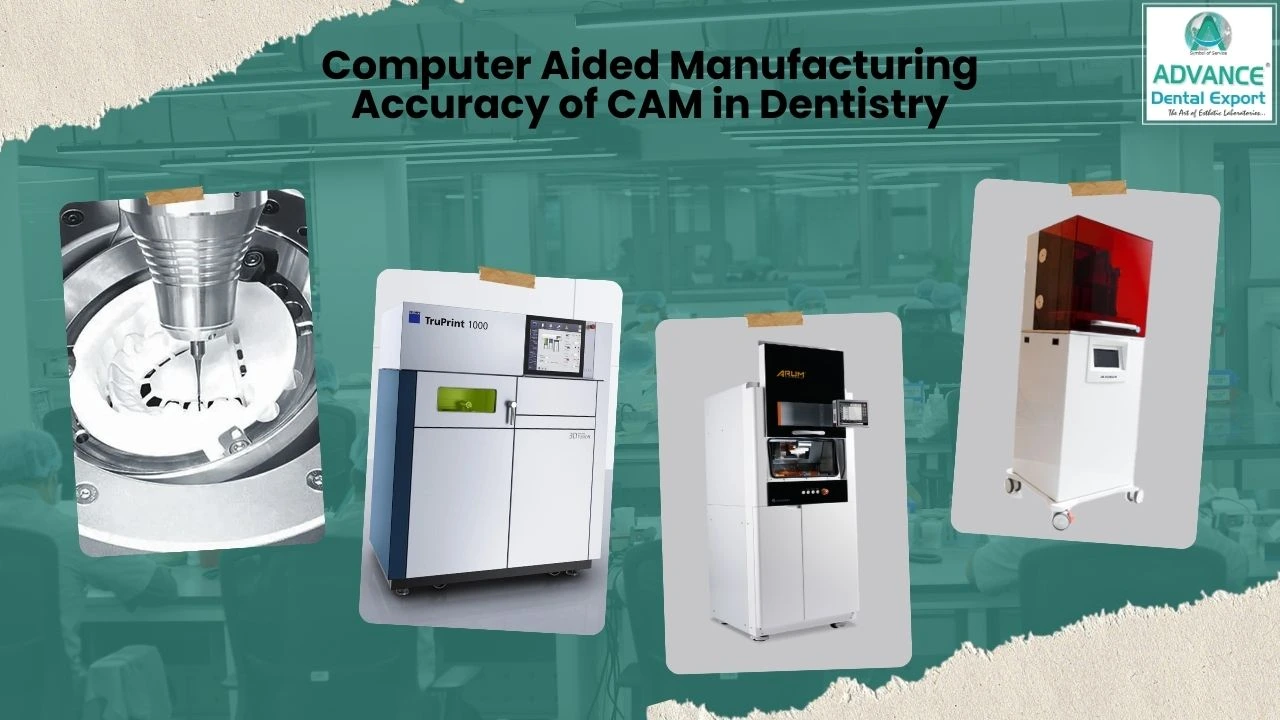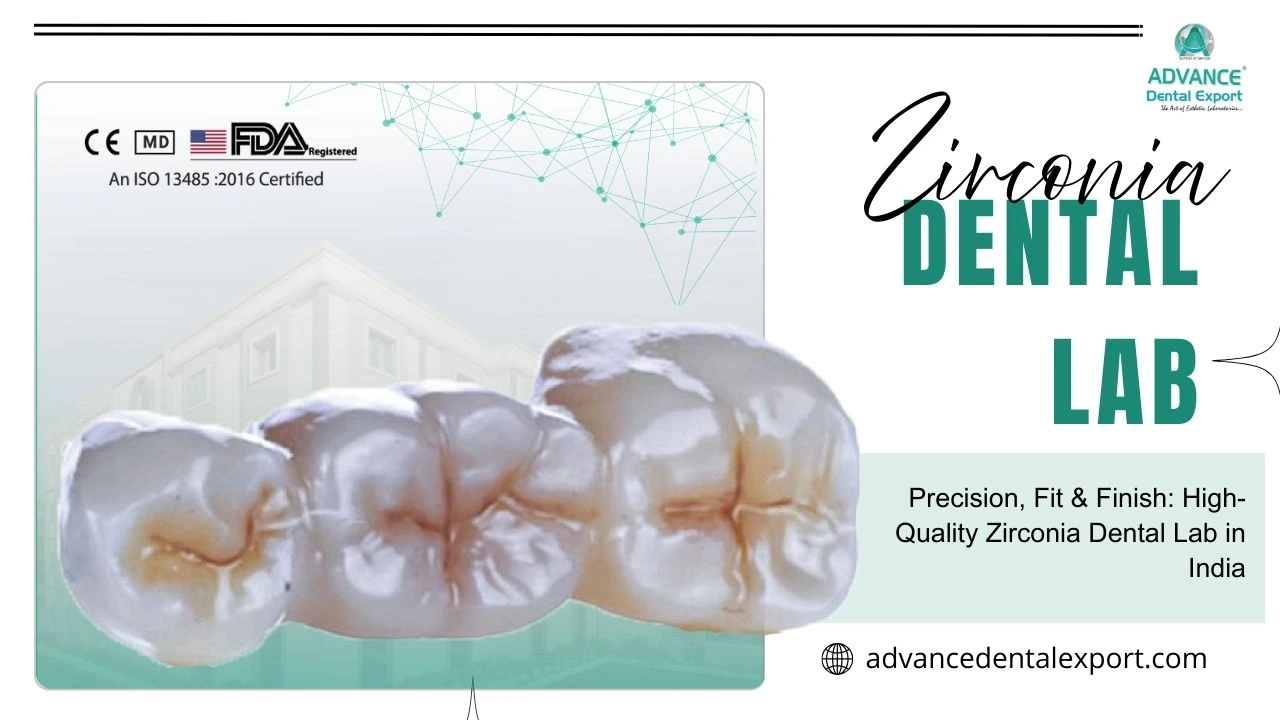Zirconia crown has rapidly become a favourite in restorative dentistry, especially among dentists across India. These ceramic tooth caps (often called zirconia caps) offer a blend of superior strength, durability, and lifelike aesthetics that traditional metal-based crowns struggle to match.
In fact, zirconia (zirconium dioxide) has been used safely in the medical industry for decades, earning a reputation for high biocompatibility and toughness.
Quick overview: Zirconia caps are metal-free ceramic restorations made from zirconium dioxide, valued for their combination of "metal-like" strength and natural tooth-colored appearance. They are increasingly used for everything from single-tooth crowns to bridges and even implant restorations, thanks to their durability and patient-friendly aesthetics.
Below, we break down the essentials and advanced insights on dental zirconia teeth crowns so you can confidently recommend and work with this material in your dental practice.
What is a Zirconia Crown?
A zirconia crown is a dental crown (or "cap") made from zirconium dioxide, a specialized ceramic material. In simple terms, it’s a tooth-shaped cover milled from an extremely strong white crystal. Zirconia dental crowns belong to the family of all-ceramic (metal-free) restorations and are known for being both strong and cosmetic.
Material Background
Zirconium dioxide (zirconia) is not new to healthcare – it’s been a trusted biomaterial in medicine (e.g., joint replacements) for over half a century. In dentistry, the form used is typically yttria-stabilized tetragonal zirconia polycrystal (Y-TZP). Yttria additives stabilize zirconia’s crystal structure, giving it remarkable toughness.
Dentists sometimes dub zirconia "ceramic steel" for its resilience. Unlike traditional porcelain, which is glassy and brittle, zirconia is polycrystalline with no glass phase, meaning it resists crack propagation exceptionally well. The result is a crown that can withstand heavy chewing forces and bruxism without chipping or breaking easily.
How is Zirconia-made Crown Fabricated?
Most zirconia bridges or crowns are fabricated with CAD/CAM technology . After the tooth is prepped and an impression (digital scan or physical mold) is taken, a dental lab mills the crown from a solid disk of zirconia. The crown is milled in an enlarged, soft state, then sintered at high temperature to achieve full density and strength. This process yields a very precise fit and a very hard restoration.
Many dental labs often stain and glaze the crown for a final color match, or they polish it to a smooth sheen. The entire workflow – design, milling, and sintering – leverages advanced equipment to ensure accuracy.
Some modern clinics even have in-house milling units, enabling same-day zirconia restoration: the dentist can prepare the tooth, digitally design and mill a crown on-site, sinter it in a specialized fast furnace, and cement it – all in one day. This eliminates the need for a temporary crown in those cases.
Key Properties of Dental Zirconia
Crowns made from zirconia are known for being incredibly strong (flexural strength often 900–1200 MPa for conventional formulations – roughly 2-3 times stronger than alumina or lithium disilicate E.max crowns). They are also biocompatible (unlikely to cause allergies or irritation) and have a white, tooth-like base color.
Because zirconia teeth crowns contain no metal, they won’t show any dark lines at the gum margins and are MRI-safe. In summary, a zirconia cap is a cutting-edge restoration that gives dentists a durable, aesthetic alternative to metal-ceramic crowns.
Advantages of Zirconia Dental Caps (Pros)
Why are so many dentists and patients opting for zirconia today? Here are some of the top benefits of zirconia as a crown material:
Exceptional Strength and Durability
Zirconia is one of the strongest dental ceramics available. These crowns can withstand heavy chewing forces without chipping or cracking, even on molars. In fact, a monolithic zirconia (all-zirconia) crown has flexural strengths around 1000 MPa or more, far above that of porcelain or even some metals.
With good oral hygiene, a well-made zirconium crown can last 15 years or longer, often 20+ years in many cases. They’re tough enough for bruxers and have been called "virtually indestructible" in terms of daily wear and tear.
Metal-Free & Biocompatible
Zirconia has no metal framework, making it a completely metal-free restoration. This is great for patients with metal allergies or sensitivities – no risk of allergic reactions to nickel or other alloys.
The material is bio-inert and integrates well with surrounding tissues; gums typically tolerate it very nicely. There’s also no risk of corrosion or metallic taste over time (zirconia does not corrode or leach ions). The smooth surface of zirconia is also gentle on soft tissues and even helps reduce plaque accumulation on the crown, promoting healthier gums around the tooth.
Explore Our Restorations
Natural Tooth-Like Aesthetics
Because zirconia is white and can be shaded, these crowns offer excellent aesthetics. They are tooth-colored and translucent to a degree, so they can closely mimic the look of natural teeth.
Unlike older porcelain-fused-to-metal (PFM) crowns , there’s no opaque metal substructure shining through. No more grey lines at the gingiva if gums recede – a zirconia crown maintains a pleasing appearance at the margins. High-translucency zirconia varieties can transmit the color of adjacent teeth for a harmonious blend.
For patients who want restorations that don’t look like "fake teeth," zirconia is often the top choice. Dentists across India report that many zirconium dental crowns are practically indistinguishable from natural teeth in the smile line, especially with newer multi-layered zirconia that has built-in color gradation.
Minimal Tooth Preparation Required
Zirconia’s strength allows dentists to be more conservative when preparing the tooth. A monolithic zirconia ceramic crown can often be placed with as little as 0.5–1.0 mm of tooth reduction, whereas a porcelain or PFM crown might require 1.5–2 mm reduction for material thickness.
Preserving more natural tooth structure is always beneficial for the tooth’s long-term health. One source notes that with a monolithic zirconia metal-free crown, "practitioners do not need to prepare much of the natural teeth, preserving more tooth structure". This is especially useful for short crowns or cases with limited occlusal clearance – zirconia can deliver strength in thin layers.
Precision Fit with CAD/CAM
Because zirconia restorations are milled via CAD/CAM, they often have very precise fit and margins. The digital design and milling process yields a crown that closely matches the tooth preparation, minimizing the adjustments needed.
A good lab-fabricated, like an Advance zirconia crown , will seat with minimal chairside grinding, saving chair time. The accuracy also contributes to long-term success by reducing gaps (hence lowering the risk of cement washout or decay at margins). As a bonus, CAD/CAM fabrication can be efficient – some high-end zirconia materials even skip certain post-processing steps, which can speed up delivery for your patients.
To sum up, zirconia milled crowns check many boxes: strength, beauty, biocompatibility, and longevity. It’s no surprise that many Indian dental clinics are transitioning away from PFMs to zirconia for routine crown work.
Potential Disadvantages of Zirconia Teeth Crowns (Cons)
No material is perfect for every situation. While zirconia dental prosthesis or crowns have numerous advantages, it’s important to be aware of their limitations or challenges. Here are some potential disadvantages or considerations when using zirconia:
- Some dentists feel that zirconia (especially the toughest formulations) doesn’t always match the light transmission of natural enamel. A survey by the India Dental Association found ~57% of dentists had concerns about zirconia’s translucency, often noting it can appear a bit flat or dense compared to natural teeth.
- Zirconia is different when it comes to bonding. Unlike glass-based ceramics, you cannot etch zirconia with regular hydrofluoric acid to create a retentive surface.
- Glaze on zirconia can wear off over time, so many dentists now prefer to polish zirconia tooth restoration to a mirror finish.
- With monolithic zirconia, the lab can stain the surface before sintering or add glaze stains, but the color is largely inbuilt.
- Zirconia dental material tends to be more expensive for patients than traditional crown types like metal-ceramic or full metal.
Types of Zirconia Crowns (Monolithic vs Layered vs Multilayered)
Not all zirconia restorations are identical – there are different types of zirconia crowns based on how they are made and the type of zirconia used. As a dentist, understanding these distinctions can help you choose the right crown for each case. The main categories are:
- Monolithic Zirconia – a crown milled from a single, solid block of zirconia (no layering of porcelain).
- Layered Zirconia – a zirconia core coping that is covered with a layer of porcelain on the outside (also called porcelain-fused-to-zirconia, or PFZ).
- Multilayered Zirconia – a newer innovation where a single zirconia block has multiple layers of differing translucency/color built in, yielding a gradient effect in the final crown.
Finally, keep in mind that preparation design might differ slightly: monolithic zirconia tolerates feather-edge margins and minimal reduction, whereas layered zirconia needs a shoulder/chamfer to support the porcelain and more reduction for space.
Always communicate the type of crown to the lab so they know the prep requirements and can advise if something needs changing.
Zirconia Crown Procedure: From Preparation to Cementation
From the dentist’s perspective, preparing and placing a zirconia ceramic crown is not radically different from other crowns, but there are a few nuances to consider (mostly in the lab phase and cementation). Let’s walk through the general procedure for zirconia :
- Diagnosis and Treatment Planning: First, determine that a crown is needed and that zirconia is a suitable material for this case. For example, if the patient has a heavy bite or wants metal-free, zirconia is a good choice.
- Tooth Preparation: Administer local anesthesia and prepare the tooth as you would for a crown. High-strength zirconia ceramic crowns do best with a rounded shoulder or chamfer margin – this provides a definite finish line for scanning and adequate thickness at the margins (0.5 mm margin is typically fine).
- Impression: Take either a digital scan or a conventional impression of the prepared tooth and opposing dentition. Zirconia crowns are typically fabricated via digital workflows, so many labs (including us, Advance Dental Export) prefer to submit a digital STL file .
- Temporary Crown: If the crown will be made in a lab (usual 2-5 day turnaround), place a temporary crown (often an acrylic or composite interim).
- Try-In and Adjustments: When you receive the zirconia restorative crown from the lab (usually in a couple of days for local labs, or even the next day with efficient CAD/CAM centers), you’ll remove the temporary and try in the final crown. Check the fit, margins, contacts, and occlusion. Zirconia dental caps typically fit very well if scanned properly.
- Cementation: Now, the critical part – cementation. You have two primary options: conventional cementation (e.g., luting with glass ionomer or resin-modified glass ionomer) if the prep has good retention, or adhesive bonding (resin cement) if you want extra retention or the prep is short. In both cases, it’s highly recommended to prepare the zirconia tooth cover’s inner surface.
- Finishing: After cementation, floss the contacts to remove excess cement and verify the patient’s bite again.
- Follow-up: At subsequent check-ups, evaluate the gingival response around the zirconia dental prosthesis. You’ll typically see very healthy tissue; one benefit of zirconia is that it tends to accumulate less plaque due to its smoothness, and also doesn’t irritate the gum margin with any metal ions.
Looking for a trusted lab partner? Get high-precision restorations from Advance Dental Export
In essence, placing a zirconia fixed crown is a familiar routine with a high-tech twist in the lab phase. As a dentist, your main adjustments are ensuring a prep that’s adequate, communicating shade and type to the lab, and adopting the proper cementation strategy.
Once you get comfortable with zirconia teeth replacement, you’ll likely appreciate the lack of fracture calls at 10 pm (porcelain chipping emergencies will be rare) and the happy patients who love that their crown looks and feels just like a real tooth.
Cost of Zirconia Crown in India
One of the practical considerations for both dentists and patients is the cost of a zirconia single crown . Zirconia is a premium material and involves advanced fabrication, so it is generally more expensive than basic crown options. However, understanding the cost factors can help you explain fees to patients and also manage your lab expenses.
Typical cost range: In India, a single crown of zirconia can cost roughly ₹8,000 to ₹25,000+ per tooth in private clinics.
From the dentist’s perspective, a significant part of that cost goes to the dental lab fee for zirconia. Zirconia blanks, CAD/CAM milling, and coloring all add to lab cost, not to mention many labs import quality zirconia from companies like Advance Dental Export.
Factors affecting zirconia bridge crown cost: Several factors can cause the cost to vary:
- Clinic Location and Overhead: As with most dental services, a clinic in a major metro (Mumbai, Delhi, Bangalore) will usually charge more than one in a smaller city, due to higher rents, staff costs, etc.
- Brand and Quality of Zirconia Material: Not all zirconia is the same, and labs often offer "tiers" of zirconia dental crowns. Premium brands can have a higher price for zirconia restorations.
- Laboratory Technology and Expertise: A crown made with the latest CAD/CAM tech and an experienced ceramist might cost more than one made with older equipment or less skilled technicians.
- Dentist’s Experience & Branding: The expertise of the practitioner can influence fees. A renowned prosthodontist or cosmetic dentist may charge more for a zirconia bridge or crown than a newly graduated dentist.
- Case Complexity and Additional Procedures: If the crown is part of a more complex treatment, the overall cost goes up.
- Warranty or Aftercare: Some clinics offer warranties on zirconia caps (say 5-year or 10-year). This is often backed by labs, which are replaced at minimal cost if a crown fails within that time.
For dentists in India, balancing cost and quality is key. Don’t cut corners on lab quality – a cheaper zirconia tooth crown that fits poorly or looks bad will cost you more in reappointments and lost patient trust.
In summary, zirconia crowns are a premium offering in your practice. The cost in India ranges broadly, but is justified by the advantages they bring. By understanding and communicating the cost factors – location, materials, expertise, complexity – you can set fair pricing and ensure patients feel the value in what they’re paying.
Many dentists find that once patients have a crown crafted from zirconia, they come back requesting it for future teeth as well, despite the higher cost, because they’re satisfied with the look and performance.
Conclusion: Embracing Zirconia – A Smart Move for Modern Dentistry
In closing, if you haven’t yet, it’s time to embrace zirconia in your practice. Start by sending the cases to Advance Dental Export for zirconia restoration – maybe that next molar crown, or the premolar. Experience the difference in fit and patient response.

